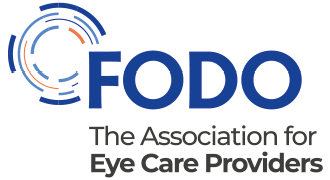Updates
The use of fluorescein strips in primary care
The position at the present time remains unchanged from the original 2013 clinical consensus panel recommendation [1]. Optometrists and contact lens opticians may use fluorescein within their scope of clinical practice [2] and should continue to use such strips in line with the guidance issued by the Optical Confederation Clinical Consensus Panel [3], which stated:
- "Based on the current available evidence, the Panel concludes that it would be appropriate, and in certain clinical situations more suitable, to use CE marked fluorescein strips as an alternative to currently available unit dose eye drops." [1].
Background information
In 2013 Bausch & Lomb (B&L) withdrew the only fluorescein strips licensed as medicines. This left eye-health professionals in the UK without a suitable delivery mechanism for fluorescein in primary care settings - e.g. for contact lens care.
In September 2013, a clinical consensus panel published a report highlighting that the benefits of using CE marked fluorescein strips outweighed the risks [1]. The GOC [2] and MHRA [4] have also clarified their current position on the use of fluorescein strips.
Updates
Originally published: September 2018
Reviewed: January 2020
Next review date: January 2023
Info: January 2020, updated online landing page to provide easier access to original supporting documents and information provided by the GOC and MHRA. No material changes to advice.
References and notes
[1] Clinical consensus panel, 2013, Report on the use of fluorescein in primary care
[2] General Optical Council statement on the use of fluorescein ophthalmic strips
[3] Optical Confederation, 2015, Fluorescein update February 2015
[4] The MHRA statement, 30 December 2013, Medicines regulatory news.
"Following the discontinuation of Fluoret strips by Bausch & Lomb earlier this year, the MHRA has received a number of queries about the regulatory classification of fluorescein strips.
The MHRA's position is that fluorescein strips intended for diagnostic purposes are regarded as medicinal products because they are in-vivo diagnostic agents. Therefore, they need a marketing authorisation under the requirements of the medicines legislation if they are intended for diagnostic purposes.
These strips, if intended and marketed only for the fitting of contact lenses, can be CE marked as medical devices, but the manufacturer should not describe such products as suitable for diagnostic purposes.
The regulatory classification of this category of products is currently being considered at European level.
However, to avoid shortage of supply, the MHRA will not take formal regulatory action to stop these products with a CE mark being used for diagnostic purposes until a decision about these products has been made at European level.
There are no restrictions on the sale and supply of medical devices, therefore practitioners can use a product which has been CE marked as a medical device."

 Patients and public
Patients and public
 Policymakers
Policymakers
 Members
Members News and views
News and views
